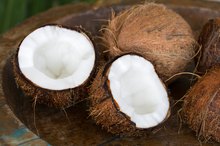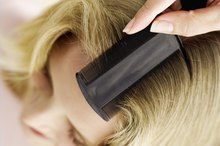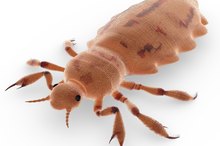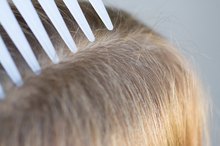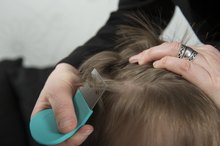How to Use Olive Oil to Kill Head Lice
Head lice when left untreated multiply and spread when the lice fall on furniture, bedding and clothing. **Lice also transfer through ordinary physical contact, including hugging.
** Head lice infestations are common among elementary age children, according to University of Nebraska-Lincoln extension educators Barb Ogg and Soni Cochran, but people of any age can have a lice infestation 2.
Your doctor can prescribe a medicated treatment for lice that matches your personal health condition and one that avoids allergies and skin sensitivities.
One common home treatment includes suffocating lice with olive oil. The Centers for Disease Control and Prevention, however, doesn’t have clear scientific evidence that oil offers an effective way to control the head pests 1.
Determine that the problem is an active head lice infestation. Other conditions, including extremely dry scalp, have similar symptoms. Your child’s nurse or your doctor can quickly identify lice. A close look for nits, another name for lice eggs, positioned near the hair roots is another way to recognize a lice infestation. [ref. #1]
Lice and Dreadlocks
Learn More
Apply a harsh shampoo to remove any hair conditioner or moisturizing. The CDC notes that these act as a barrier to block olive oil from sticking to the hair shaft. That cuts down on the effectiveness of the smothering effect of the oil. [ref. #1]
Place plastic sheeting on the floor under a chair or sit in the bathtub to do the smothering process. This keeps the control area free from escaping lice. [ref. #4]
Coconut Oil and Head Lice
Learn More
Saturate the hair with olive oil. Covers the entire scalp and coat the hair shafts close to the scalp. [ref. #2]
Place the shower cap or elastic bowl cover on the head. Make sure the elastic keeps all of the hair on the neck and strands near the ears inside the cap.
Wait 1 to 2 hours for the oil to smother the lice. Ann Arbor Public Schools health officials recommend using a bandanna wrapped over the cap to keep lice from escaping 3. The school officials also suggest leaving the shower cap on for 8 to 10 hours for severe infestations of lice.
Blot the hair with disposable paper towels to remove excess water. Place the towels quickly and carefully into the trash bag to avoid escaping lice or falling eggs.
Comb out the lice and eggs with the metal comb. Flush these down the drain with water, or use paper towels to frequently clean the comb. Throw the towels quickly into the trash bag. Nits have teardrop shapes and come in white, beige or brown colors. Continue the combing until the hair is free from lice and eggs.
Wash hair with dish detergent and then thoroughly rinse with cool water. Repeat the washing and rinsing process a second time.
Divide the hair into 20 even sections and dry each for 30 seconds with the dryer set on medium heat. Dry close to the scalp to kill any lice eggs.
Tips
Comb hair with the lice comb every day for the next 21 days to locate any lice and new eggs. Repeat the olive oil smothering process if you find any active lice during these regular inspections.
Related Articles
References
- Centers for Disease Control and Prevention: Treatment Frequently Asked Questions
- University of Nebraska-Lincoln: Insects, Spiders, Mice and More
- Meister L, Ochsendorf F. Head Lice: Epidemiology, Biology, Diagnosis, and Treatment. Deutsches Ärzteblatt International. 2016;113(45):763-772. doi:10.3238/arztebl.2016.0763
- Centers for Disease Control and Prevention. Head Lice: Frequently Asked Questions (FAQs). Updated July 17, 2019.
- Devore CD, Schutze GE. Head Lice. Pediatrics. 2015;135(5). doi:10.1542/peds.2015-0746
- Barker SC, Altman PM. A Randomised, Assessor Blind, Parallel Group Comparative Efficacy Trial of Three Products for the Treatment of Head Lice in Children--Melaleuca Oil and Lavender Oil, Pyrethrins and Piperonyl Butoxide, and a "Suffocation" Product. BMC Dermatol. 2010 Aug 20;10:6. doi:10.1186/1471-5945-10-6
- Abdel-Ghaffar F, Al-Quraishy S, Al-Rasheid KA, Mehlhorn H. Efficacy of a Single Treatment of Head Lice With a Neem Seed Extract: An in Vivo and in Vitro Study on Nits and Motile Stages. Parasitol Res. Published June 11, 2011. doi:10.1007/s00436-011-2484-3
Writer Bio
David B. Ryan has been a professional writer since 1989. His work includes various books, articles for "The Plain Dealer" in Cleveland and essays for Oxford University Press. Ryan holds degrees from the University of Cincinnati and Indiana University and certifications in emergency management and health disaster response.

